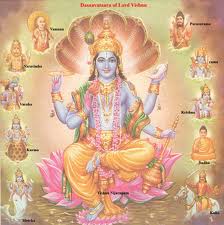| 9 Temple Construction and fruits | |
Even a thought of constructing a Temple or a Water Body is adequate to demolish sins of long standing nature and to actually accomplishing the task is like establishing a right to reach Vaikuntha. The devotee who completes the temple construction also redeems the sins of his previous generations; indeed, his ‘pitaras’ would secure instant relief from the torments of hells and qualify for substantial dispensations.The person(s) responsible for this deed of extraordinary merit is eligible for ‘Yagna Phal’, ‘Samasta Tirthta Snaana Phal’, and ‘veera phal’or death on battle fields. If a miser takes up the deed of Temple renovation, let alone construction, would in his own life time qualify the fulfillment of his dream-like aspirations of muliplying his assets. The construction of even an ‘Ekayatan’ or single one room temple would attain Swargaloka. A ‘trayayatan’ ‘mandira nirmaan’ enables reaching Brahma loka. A ‘panchaayatan mandira nirmaan’bestows Shiva Loka and an ‘Ashtaayatan’, facilitates Srihari’ Sannithi’ while a ‘Shodayatana’ fulfils Purushaarthas, of Dharma, Artha, Kaama and Moksha. A rich person’s lavishness in temple construction would indeed undermine the effort of a poor but motivated person’s temple consruction, thus proving that the motivation would have to emerge from ‘within’ rather than from fat money-pocket. Even when children for fun or playfulness build temples with sand would also qualify for salvation. Persons who undertake repairs, let alone construct temples new, are also eligible for attaining Mukti. Those who are responsible for constructing temples of Vishnu, Shiva, Surya or Devi become residents of those very Lokas and more significantly their family members too share the same benefit. Of what avail is the money earned by a rich person if even a temple is not constructed by him or her! Of what avail is such opulence not spared for the use of the poor, the Brahmanas, or for noble deeds! Just as death is certain, the riches unused for religious purposes too are certain to vanish sooner or later. That is why charity is one sure way of redeeming the sins of the past and providing a shield against the onslaught of sins of the future. And the crowning act of charity is to construct temples! Equally significant is to set up ‘Deva Pratimas’made of wood or bricks or stone or the best of all by metals. It is stated that ‘Deva Pratima Sthapana’ along with the relevant Mantras and accompanying formalities and regular worship is a far reaching deed of divinity. Lord Yama Dharmara Raja addressed the ‘Yamadootas’ and said: ‘Never bring human beings to ‘Narakas’ who constructed temples, or set up Idols of Devas, or were engaged in regular Pujas there. Aviod those persons from a distance who are connected with devotion of Bhagavan, especially taking the name of the Supreme while in sleep or consciousness, while sitting or walking, or in any other positions. Be far away from those who enter the temples and make offerings to Bhagavan of flowers, dhoop, clothings etc, in the service of Bhagavan. Never even look at those who built ‘Mandirs’ of Bhagavan of any name like Vishnu/ Shiva/ Shakti and other Forms or even the progeny or relatives of those illustrious devotees as there is no question of bringing those to Narakas at all. Dharmaraja said: | |
 Prev: A Brief on Vedas and Puranas Prev: A Brief on Vedas and Puranas | |

 Next: A Brief on Vedas and Puranas
Next: A Brief on Vedas and Puranas